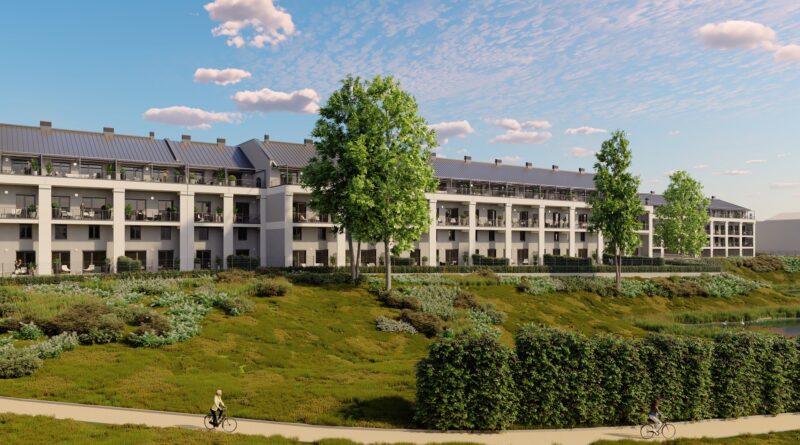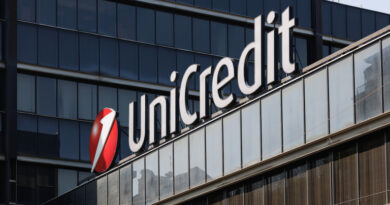What are we waiting for?
The management and team leaders of Colliers International’s Hungarian office held their regular press conference about the expectations of 2010 with looking back to last year’s results. Michael Smithing, managing partner explained the structural changes happened in the company’s life, and pointed out the most important tasks for this year, while the team leaders analyzed the results and predictions of the market.
“The system based on the partnership model – which has been operating in Hungary for 18 years now – contains such benefits and strengths, which helps top local firms to unite their knowledge under the Colliers International brand. At the beginning of this year we have agreed to broaden the partnership to encompass all of Colliers International. Colliers is based in Vancouver Canada which will host the 2010 Olympics next month. Our business strategy for this year draws upon the team spirit which is necessary to succeed at the Olympics, and we believe that if Hungary can also embody this spirit we will soon regain our leading position in Central Europe.” – summarized Michael Smithing.
Ákos Balla, director of the valuation and research teams said, that 2009 was calmer than we had anticipated, the forced sale transactions and mass bankruptcies expected by many didn’t happen. The reduction in property values has become a widely accepted fact, although this has not been substantiated by significant transactions. In 2010, financing parties will have to face the consequences of reduction in property values – brought about by a decline of rental rates and steady increase of vacancy levels – something that was keenly avoided in 2009. “It has become clear that more meticulous and careful planning is necessary during the preparation of a development, with increased emphasis on in-depth market research.” – said Ákos Balla.
Tamás Beck, industrial team leader said, that during 2009 the development dynamics of the industrial property market decreased compared to previous years. Approximately 181,000 sqm of warehouse space has been completed, which is less than in 2008. The number of lease agreements is also fewer (140,000 sqm). This is a significant, although not a drastic decrease, especially if we consider data from previous years – and not only the outstanding numbers from 2008. The vacancy rate has increased compared to the end of 2008 (from 17 to 21%), although it remained unchanged compared to the number at mid-year. Tenants have taken a wait-and-see position, and despite active market-testing relatively few transactions have been realized last year. According to our knowledge and estimates 15-20% of market players have decided to extend their lease agreements or to renegotiate present terms. 2010 will be the year of stabilization, although during the year developers’ activity will drop drastically, especially considering big box space and the speculative buildings. “For smaller tenants a “tenan’s market” will apply, but for the larger tenants a “landlord’s market” will be applicable. Following the leasing up of “discount price” buildings a new pricing period is expected regarding newly developed buildings, which will likely result in the increase of rents. A relatively low degree of activity was experienced on the industrial sales market looking at sales of both development land and buildings. The market can be expected to “thaw out” somewhat during 2010, due partly to occasional urgent sales and postponed intentions to purchase, but these can be expected mainly in the small-medium sized segment”. – summarized Tamás Beck.
Miklós Saly, office leasing team director emphasized, that, looking at both the economic and real estate markets he would compare 2009 to a great big fatherly slap in the face, which one recalls even in one’s senior years without exceptional concentration. It is interesting to think what the office market would look like today if the crises had not occurred. Would the vacancy rate be even higher? Where would rent levels be at? Would developers continue further expansion completely regardless of the Marshall cross? “The important thing is that the crises did come, it brought about the fact that the market will never be what it was in recent years. We can expect more aware and reasonable decisions from all sides. If we think positively, then just maybe we can see that the crisis has done some good for us after all.” – said Miklós Saly.
Anita Csörgő, retail team leader pointed out, that with non-food retail sales volume declining 7,6% in 2009, retailers profitability has been increasingly strained resulting in rationalization of their shop networks in Hungary, including rent renegotiation, shop size reduction and even closings. Vacancy levels are up especially outside Budapest and on High Streets and rental levels declined in all retail sectors.
New retail concept ‘Destination Center’ that combine unique architecture, unique features, unique retail offer in smaller formats in central Downtown locations are defying trend as Hungarians are increasingly seeking new shopping experiences. Palazzo Dorottya’s retail levels with Gruppo Coint, Escada Sport and Pizza Marzano and Paris Department Store’s Alexandra Book store are 2009 examples. 2011 will have ORCO’s Váci1 developed in the same concept.
Retailer restructuring has created opportunities for stronger retailers or for new brands entering market in 2010 and beyond with more competitive conditions available for new leases and openings possible in some of the strongest retail locations such as Mammut, Westend and Váci utca without key money.
Concerning the investment market, Michael Smithing said as a reaction to the release sent by MTI on the 20th of January, that the industry must take primarily the volume of the income producing investment properties into consideration, and in this comparison a reasonable increase is predicted for 2010. In 2009 Colliers International has recorded 17 transactions across all sectors for a total of approximately 569M. 6 of these involved income producing investment properties totalling 262M. The remaining represents owner occupier, hotels or properties waiting for redevelopment. The prime office yield is estimated at about 7,75% and 7,5% for prime retail with the yield for average A class office at about 8.5%.
“The investment market is has hit the bottom, in 2010 the prime yields will stabilize, while instead of the currently estimated yields we will see measurable facts based on transactions. Investor focus is back to fundamentals with an increase in investment transaction volume expected to reach about 400M-450M in 2010 after 262M in 2009.”
































